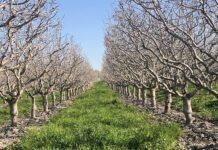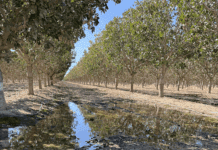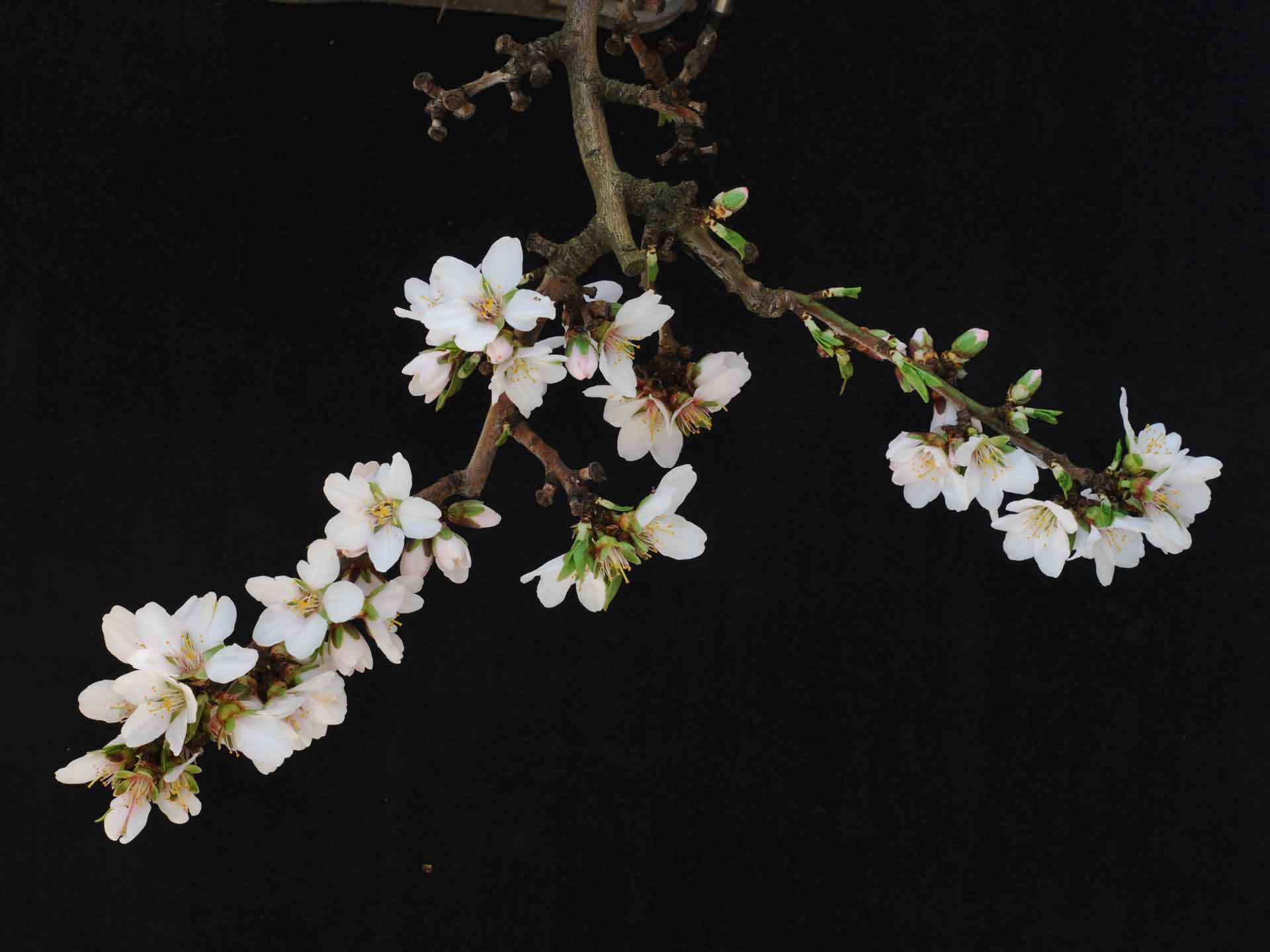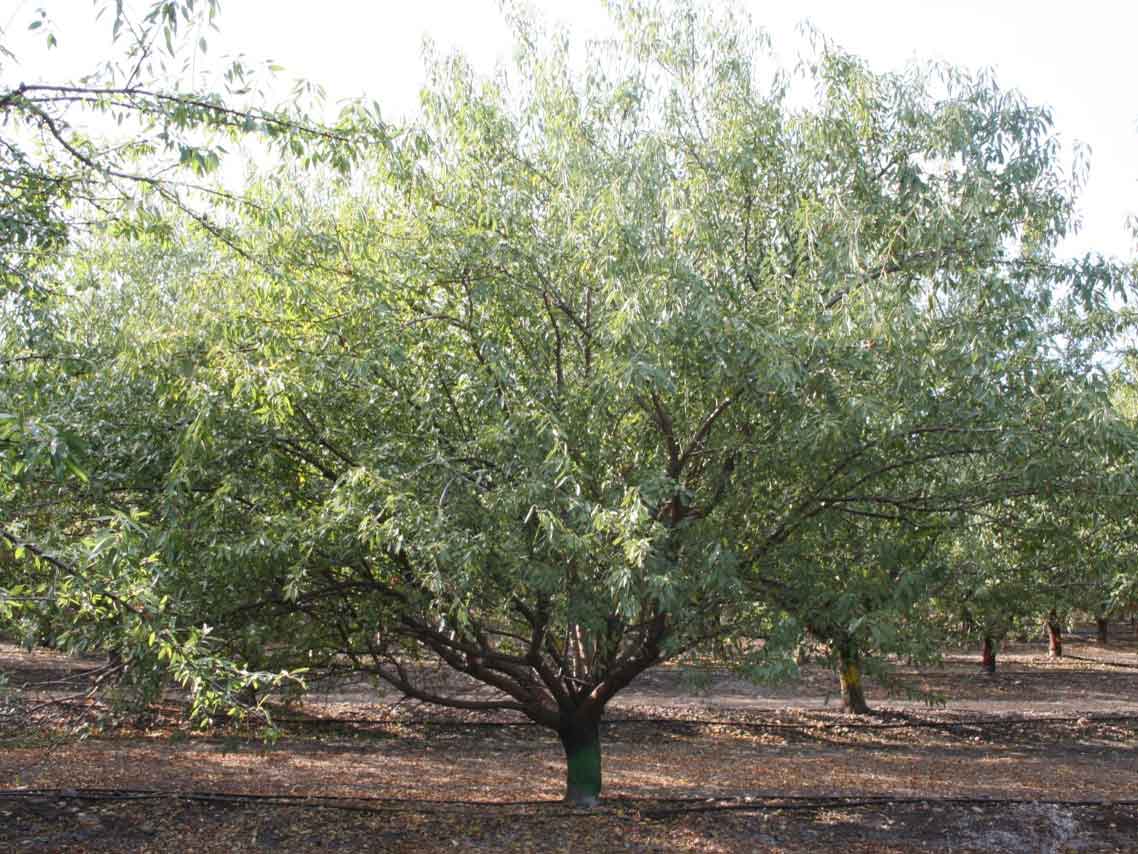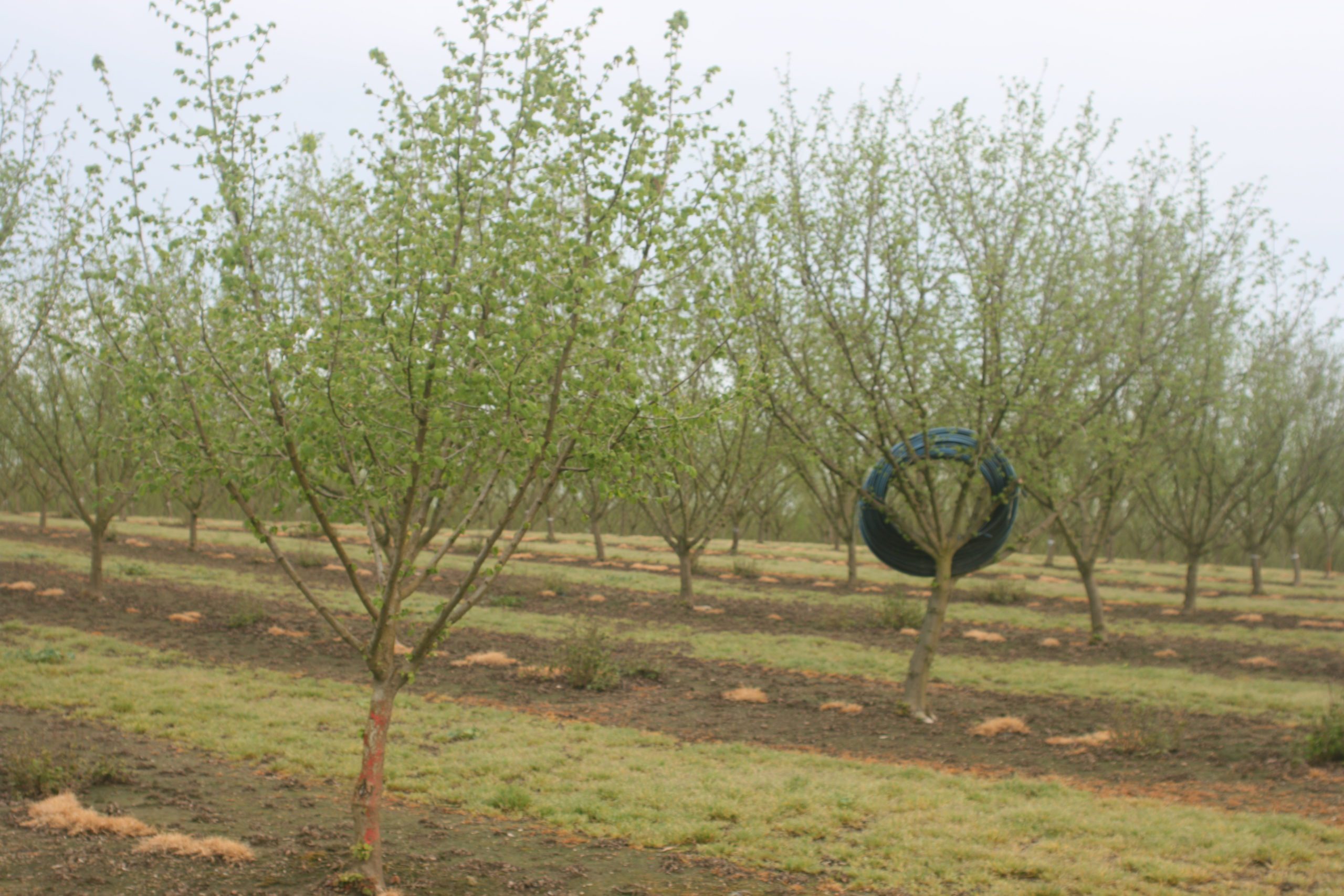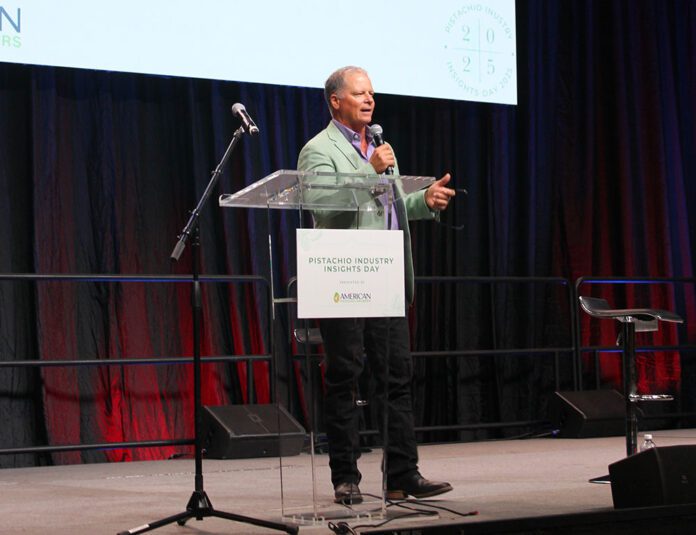
Listen to the audio version of this article. (Generated by A.I.)
“Economics come first,” said Joe Coelho, director of sustainability for American Pistachio Growers (APG). Opening the line-up of speakers at the pistachio industry’s second annual Insights Day, Coelho stressed that APG sustainability efforts are intended to optimize returns.
Economics have to be the foundation for sustainable pistachio production, he said.
Revisiting the definition of sustainability, Coelho said the term in agriculture is the integration of economically sound, environmentally responsible and socially beneficial practices, where financial viability serves as the foundational metric enabling long-term adoption, adaptive resilience and continuous improvement in production systems.
Environmental and social benefits may arise from successful economic implementation.
“We must lean into practices with all three benefits,” Coelho said.
APG, host of the event in Visalia, has been delivering on demonstrations and field-level research to help growers with their sustainability goals. Those include soil health economics and metrics, WeedSeeker 2 demonstrations, biostimulant research, solar protection, alternative fungicides and lime sulfur.
Coelho additionally highlighted as APG deliverables grant funding, market access, policy and cross-commodity collaboration.
Seminar speakers at Insights Day focused on how their projects and products match the definition of sustainability, what grower pain points the project touches and the economic impact of their product.

New “Deep-Dive” Field Trial
UCCE Fresno County Nut Crop Advisor Mae Culumber outlined a new “deep-dive” field trial that will be carried out over the next few years. The aim is to learn how healthier soils affect water retention, nutrient cycling and long-term pistachio yields. Managing for soil health, Culumber explained, can enhance drainage, boost water retention, increase nutrient availability and enhance and sustain long-term yield. Cover crops, mulches and other organic matter inputs can protect the soil surface and reduce crust formation, improve infiltration and enhance microbial activity that aggregates soil.
The objectives of the deep-dive field trial are to establish a replicated trial to compare water-applied biological and nutrient treatments and create a platform for future research stacking to understand potential synergies between products and practices.
Nutrient and water use efficiency and economic return will also be quantified.
The trial, which is just getting underway with irrigation valve infrastructure and soil assessment, will take place on a 624-acre block of 2013 Golden Hills on UCB1 on the west side of the San Joaquin Valley. Data to be collected include quantifying the physical, chemical and biological soil health changes over time, greenhouse gas emissions, tree mineral nutrition and physiological responses including chlorophyll, stem water potential and stomatal conductance. Yield and quality will be tracked over three seasons to compare productivity. Efficiency and material costs will be evaluated to determine treatment effectiveness and return on investment.
Using regenerative practices in the trial will determine their potential to offset costs of conventional materials while also improving soil properties.
Culumber said the trial will include a return-on-investment analysis for all base treatments, soil carbon data and key soil health metrics and water use savings. There will be regional grower education and outreach field days at the trial site.
Abiotic stress presents a challenge in agricultural production. Orlando Tapia, an agronomist with Corteva Agriscience, focused on maximizing yield potential and mitigating abiotic stress in plants.
Abiotic stressors are environmental and play a role in production but cannot be controlled.
“You can have 100% of yield potential at the start of the season, but stress events can cause a loss of that potential,” Tapia noted.
He added that stressed plants are not only less productive, but they also consume more energy. Stress also causes plants to shut down to conserve resources.
Abiotic stress can be mitigated by biological products, Tapia said. They are advanced management tools that can increase plant resilience and protect yield, convincing plants not to go into “survival mode.”
The Corteva product X-Cyte supplements plants with cytokinin, a naturally occurring hormone. Tapia said field tests show it can support vegetative development, manage heat stress and promote fruit development.
Field research done by APG shows a net gain of $430 per acre with X-Cyte applications. Biologicals, Tapia said, do not replace any sound agronomic practices. The foliar-applied product does support plant growth, stress tolerance and input use efficiency.
Carbonic vs Sulfuric
Carlson Herbert with Eco2mix Inc. provided a look at carbonic acid soil water treatment versus sulfuric acid as another tool for sustainable production. Herbert collaborates on research to quantify the benefits of carbonic acid for plant and soil health. In his presentation, he noted that while carbonic acid, a weak acid that forms when carbon dioxide dissolves in water, is 20% more expensive than sulfuric acid, it saves water and reduces nutrition costs. He explained that with more nutrient cycling and less nitrogen applied per acre, there is an increase in soil health and yields.
A research project with APG and Fresno State is comparing carbonic and sulfuric with a control to determine how much CO2 is sequestered in the soil when the acids are used for water pH control. Six APG growers are participating in the project through 2027 to determine environmental, nutrition and yield benefits, Herbert said.
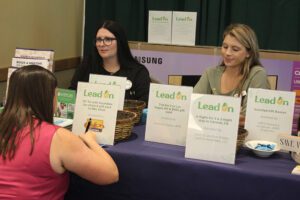
Improving Spray Applications
The challenge with spray applications, USDA-ARS Research Scientist Joel Siegel said, is reducing costs while maintaining or improving pest control.
“Can we do more for less? What changes can be made in applications?” Siegel asked.
He suggested decreasing water use to improve timing and reduce labor and diesel costs. Greater spray efficiency also reduces overall chemical inputs. One example is targeting the trees directly during applications rather than spraying gaps in between. Progress has been made, Siegel noted, with 70 to 80 gallons per acre delivered using air blast sprayers with organosilicon adjuvant. Fixed-wing aircraft applications at 10 gallons per acre further improve efficiency. This year, APG launched a major new study with Siegel investigating the Smart Apply Intelligent Spray Control System, which uses LiDAR (Light Detection and Ranging) technology.
Weed Control
New technology in weed control is helping achieve sustainability goals. Jonathan Henderson with Ptx Ag explained how advancements in precision weed spraying allowed for greater efficiency and cost savings.
The next generation of WeedSeeker includes adaptive calibration, ISOBUS compatibility and faster processing, among other upgrades. It also can be retrofitted on existing sprayers.
A cost analysis in orchard applications showed a 60% average savings in mature orchards.
Reflectance Materials
Information on use of reflectance materials to reduce stress and improve yields was shared by OrCal Inc.’s Thomas Putzel.
The company is partnering with APG in ongoing research demonstration projects to measure carbohydrates, water use efficiency and chilling with reflectance material applications.
Manipulating light, Putzel said, can maximize input value and yield potential. One study at Fresno State showed a 15% reduction in water use with reflectance compared to a control block.
Analyzing Data
Analyzing data to drive better farming decisions is not just for large-acreage growers, Nick Rosa of Rospec Insights said.
His company takes data from costs, yields, soil tests, harvest data, etc., connects this data and creates reports that can be used to make informed decisions.
“Know where you are at to plant for the future.
“Analytics aren’t just for big farms; they help protect profits, plan for tough years and support farm sustainability.”

Cecilia Parsons | Associate Editor
Cecilia Parsons has lived in the Central Valley community of Ducor since 1976, covering agriculture for numerous agricultural publications over the years. She has found and nurtured many wonderful and helpful contacts in the ag community, including the UCCE advisors, allowing for news coverage that focuses on the basics of food production.
She is always on the search for new ag topics that can help growers and processors in the San Joaquin Valley improve their bottom line.
In her free time, Cecilia rides her horse, Holly in ranch versatility shows and raises registered Shetland sheep which she exhibits at county and state fairs during the summer.







